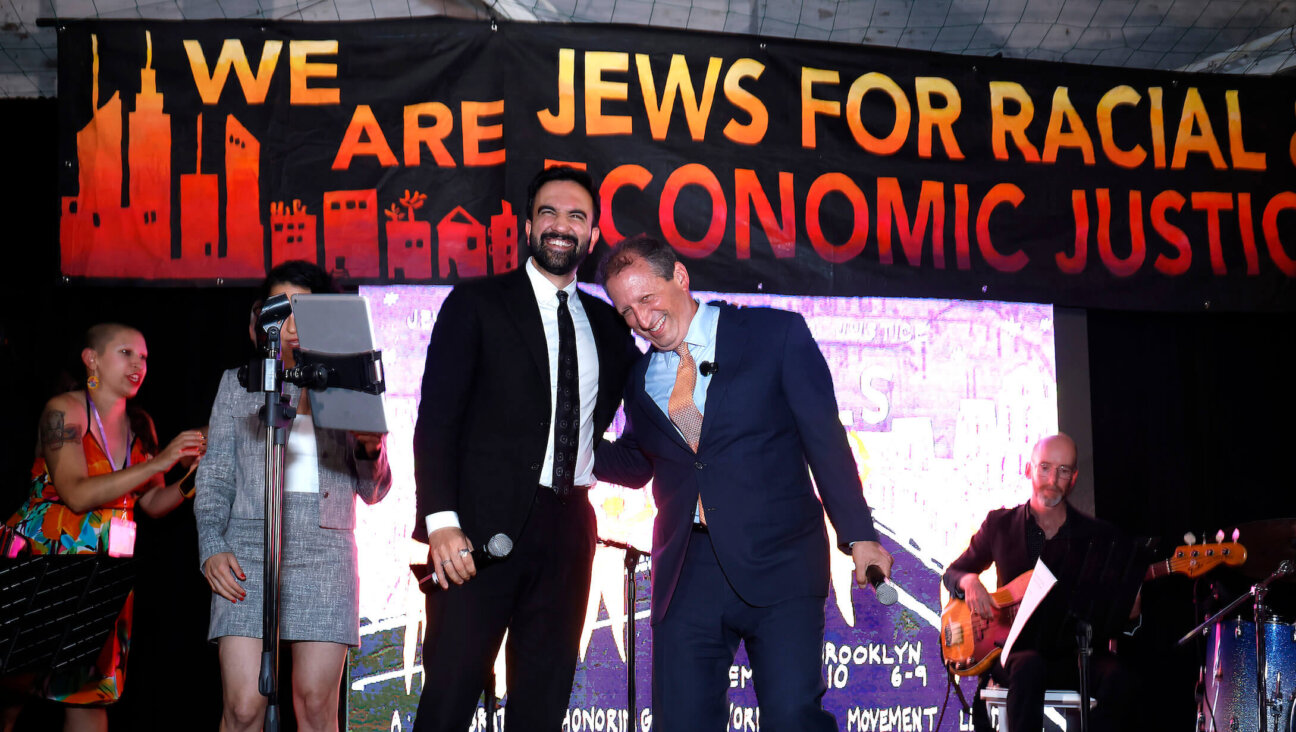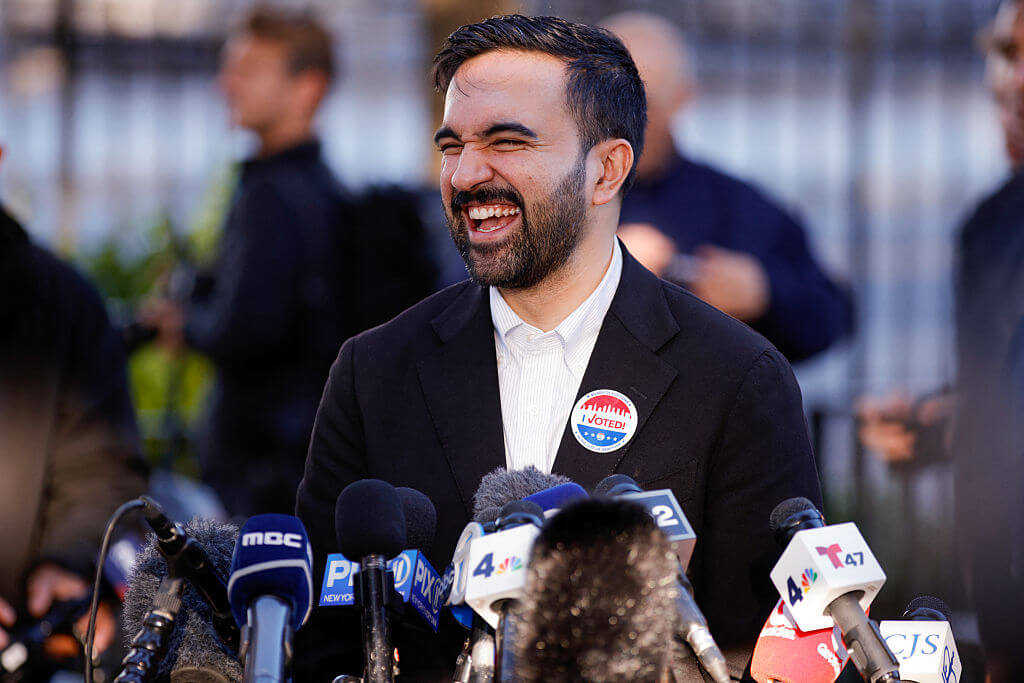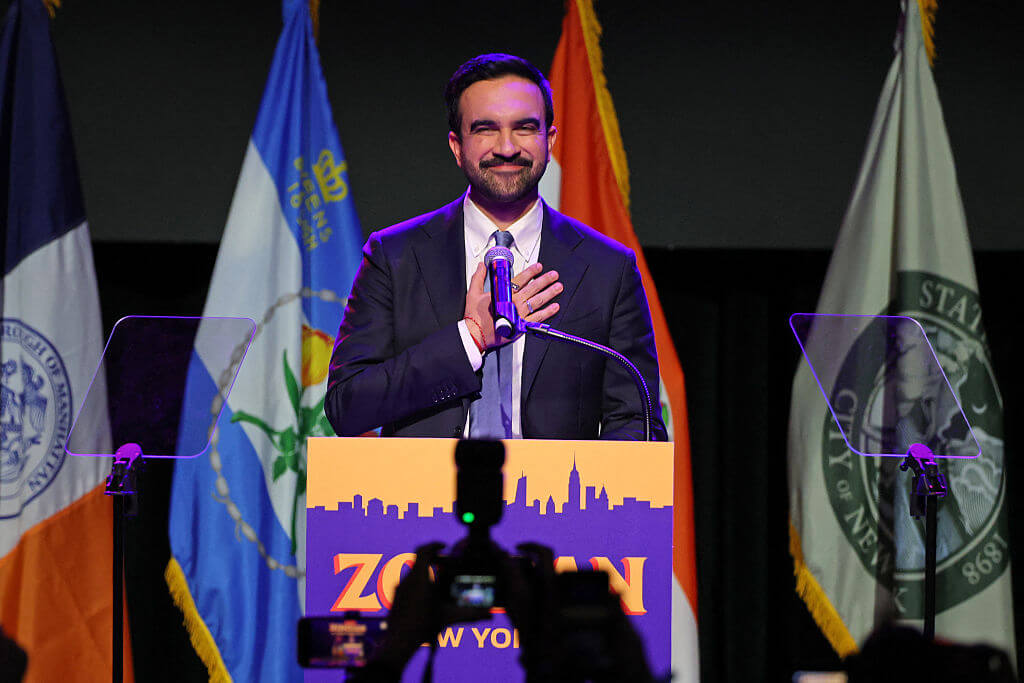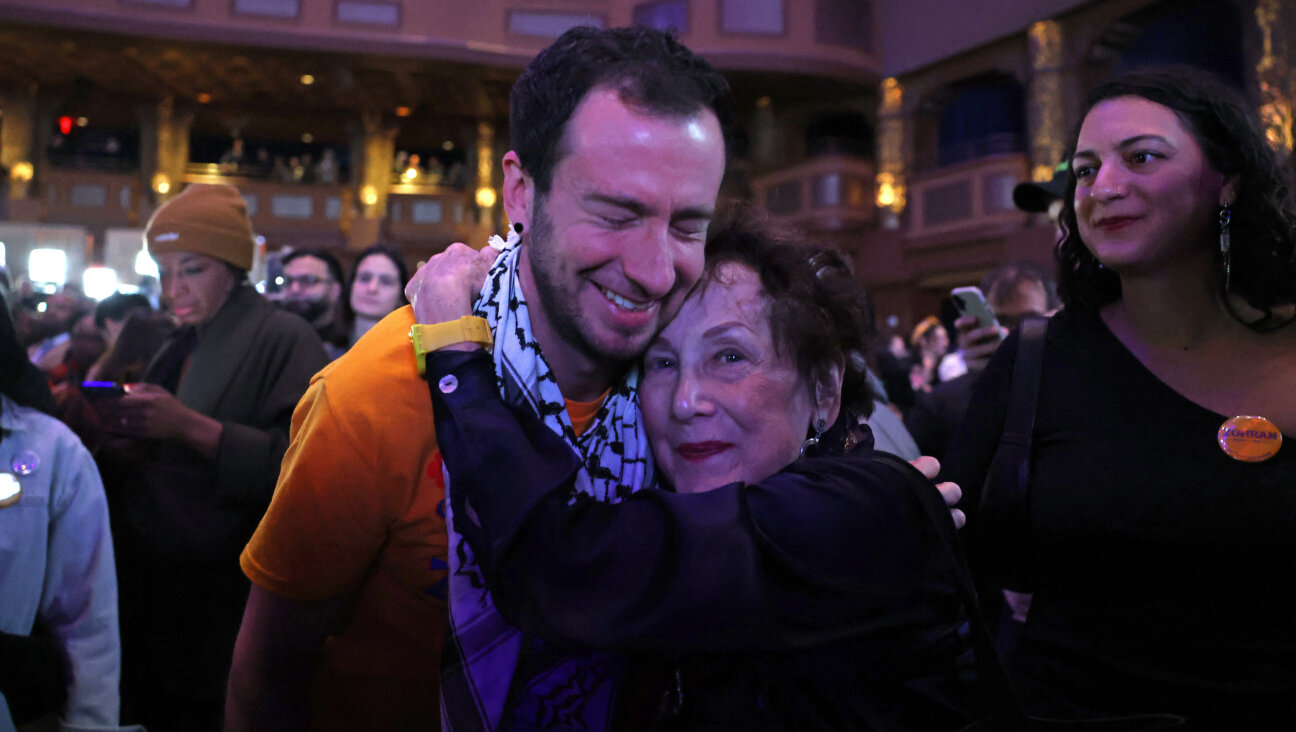How The Pittsburgh Shooting Inspired Me To Put On A Kippah

A Jew prays with the kippah in the interior of the Dohány Street Synagogue, Budapest Image by Getty Images
On the infamous Saturday morning of October 27, 2018, I was knocking on doors for a local pro-choice candidate, like I often do on Saturdays in the lead up to elections. I saw the alert come over my phone that there was a shooting at a synagogue in Pittsburgh. I put the phone away, finished my packet, and called a Lyft to take me home. Alone in the backseat, I broke down uncontrollably.
Then a wave of energy rushed back through me. Some combination of anger and defiance. And a single thought lingered in my head while reading the horrific updates coming out:
I will not hide.
I immediately recalled a conversation just two weeks earlier with a friend. We were part of a delegation of young Jewish leaders brought together to discuss the conflict and pathways to a two-state solution. During a break, I confessed to her that I had been struggling to reconcile a piece of my identity and civic leadership.
While those who know me know I’m Jewish, like many other white-presenting non-Orthodox Jews, when I walk down the street I look just like any other white man in America. And, there are benefits to that. A lot of them. Chief among them for someone like me is that I can blend into the crowd and hide the very thing that people hate about me, while gaining from a system built for people who look like me.
However, as someone who identifies as a progressive, specifically because of how I interpret my Jewish identity and obligations to others as a Jew, I know that is a luxury members of other marginalized communities in this country don’t have. While I can blend in, they cannot hide their blackness, their brownness, their Muslim faith, their sexual and/or gender identities.
How could I, I asked her, genuinely be a leader in the broader progressive community, and an ally to all, if I am enjoying all the benefits of my identity while carrying none of the burdens?
Yes, I’m a Jew, which means I’m part of the oldest and most consistently persecuted and attacked marginalized community in human history. But, on a day to day basis, I can walk through the world without owning any of that risk. To those who don’t know me, who don’t see all of me, I’m just a white man in America.
But, I’m not just a white man. I’m a Jew. And there are people who hate me for it. There are, in fact, burdens that come with this identity — if I choose to bear them.
When I got home that day I made a decision. From that day forward, I would wear the kippah again. Not for religious reasons — but because I refuse to hide who and what I am.
Over the last year, the kippah has become a part of me. On the rare day I left it at home, I scrambled to find the nearest synagogue to borrow one. When I place it on my head, I remember the community I’m a part of. I think of the millions of Polish Jews like my grandfather who lost their lives. I think of the millions of European Jews exterminated in the Holocaust who were brutally robbed of the chance to have children, or grandchildren, or descendants who might be my peers today. I think of the generations of Jews over thousands of years who longed for our ancient homeland as they struggled to maintain their identity and safety in societies that kept them on the fringes at best, and regularly attacked, alienated, and murdered them no matter their contributions to each of those societies at worst.
While light as a feather, it sits on my head as a heavy yet welcome burden, pushing me to live a life that honors the lives lost and never had. A life hopefully worthy of our people, of humanity. A life hopefully worthy of life itself.
Over the last year, I’ve felt things I’ve never felt before. I’m far more self aware in public spaces. I’ve felt my heart race, and wondered if I was safe, when I’ve found myself alone in unfamiliar spaces. I’ve been anxious for my safety as I walked down a city street at night, or as I’ve boarded planes.
I’m constantly aware in meetings, with strangers and people I know, that I may not be judged as an individual, but as a representation of an entire community. Would I be the good kind of Jew to them? The bad kind of Jew? The classic stereotype? Or the exception? Am I the Jewish friend they reference when someone calls out a potentially anti-Semitic statement?
And, most importantly, do they care enough about me in my totality that they would protect me if need be? Or is their friendship like that of so many “good people” throughout history who turned their back in our darkest moments?
I wear the kippah because I am deeply proud to be a Jew. I wear the kippah as an external message of strength to our people. I wear it because I want those who hate Jews to know that we are here and that their hate will never be able crush our identities or our joy for life.
I also wear the kippah to stand with members of other marginalized communities. I do not mean to compare or conflate what it means to be a Jew, with what it means to be a part of any other community in America right now. I do not mean to suggest that by wearing a removable kippah on my head each day I face the same structural or societal challenges others do. However, I feel genuinely compelled to walk through this world in imperfect solidarity with those being attacked in today’s America in the ways in which I can, as someone who understands the intergenerational trauma of a community that is often attacked. You can’t hide what they hate about you — so I won’t either.
Rather, I will joyously celebrate life and my Jewish identity, and I will fight for a world free of bigotry, regardless of who is attacked.
And I’ll do it with my blue, suede kippah on my head.
Oren Jacobson is a civic entrepreneur, organizer, and consultant. He’s the co-founder and Co-Executive Director of Men4Choice and the former National Chapter Development Director for the New Leaders Council.

















